SAMARKAND – ASTANA – Samarkand is rightfully Uzbekistan’s most bejeweled and famous city, as its iconic medieval mausoleums, blue mosaics and incredibly delicious cuisine are unlike anything seen before.
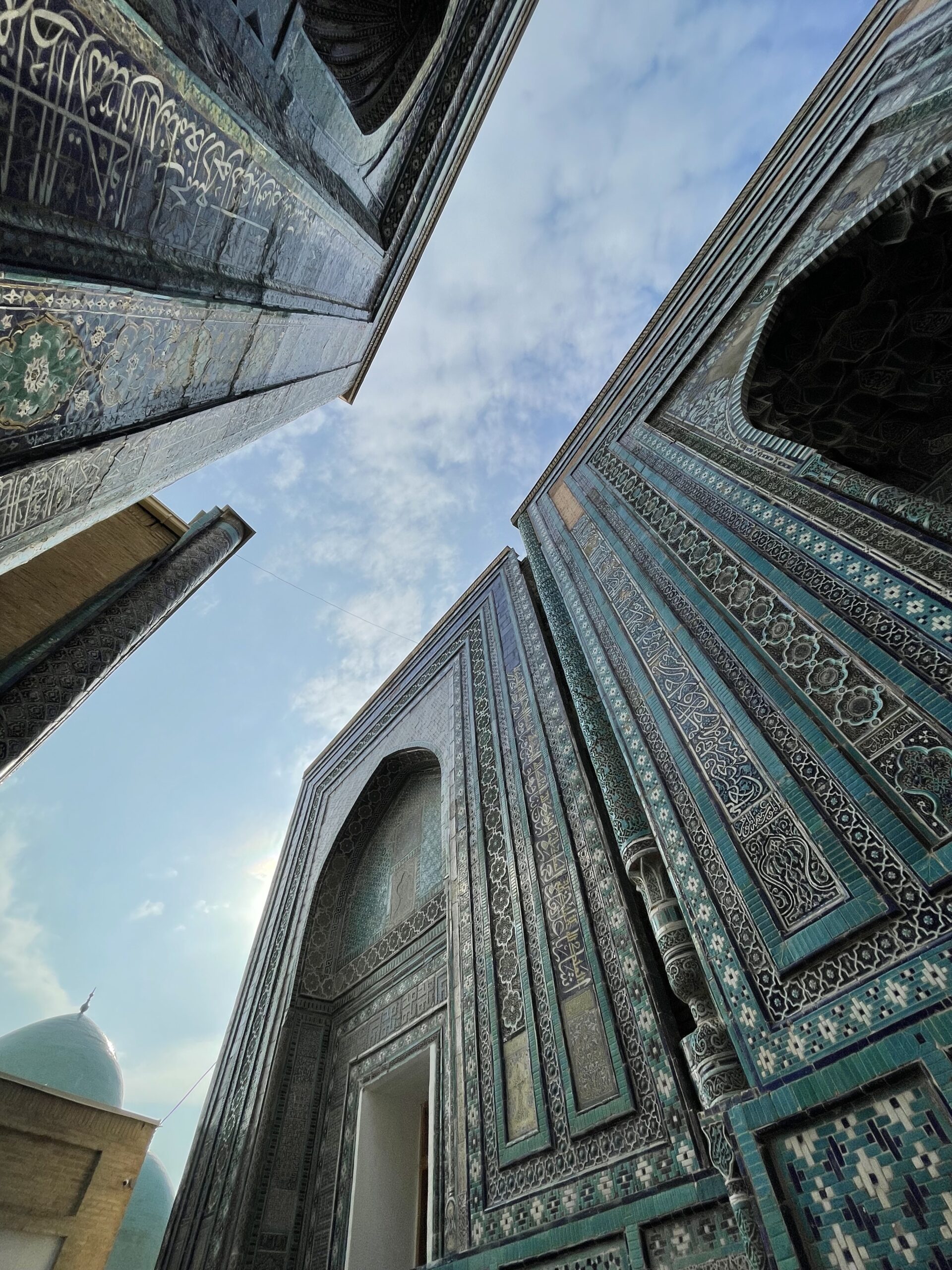
Inside the Shah-i-Zinda complex, which includes mausoleums of 11th – 15th and 19th centuries. Photo credit: Assel Satubaldina/ The Astana Times
Samarkand, Uzbekistan’s second-largest city and home to 552,000 people, has been at the crossroads of many cultures for over two millennia. Traders, scholars and explorers converged here, bringing with them goods, ideas, languages and cultures.
The city, inscribed in the UNESCO World Heritage Site list in 2001, became a melting pot where East met West, fostering a unique blend of traditions that still resonate in its architecture and art.
Founded in the 7th century B.C. as ancient Afrasiab, Samarkand has been under the influence of many rulers, but the city has seen its most significant development in the Timurid period in the 14th and 15th centuries. In 1868, the Russian army captured Samarkand, part of the broader Russian expansion into Central Asia during the 19th century.
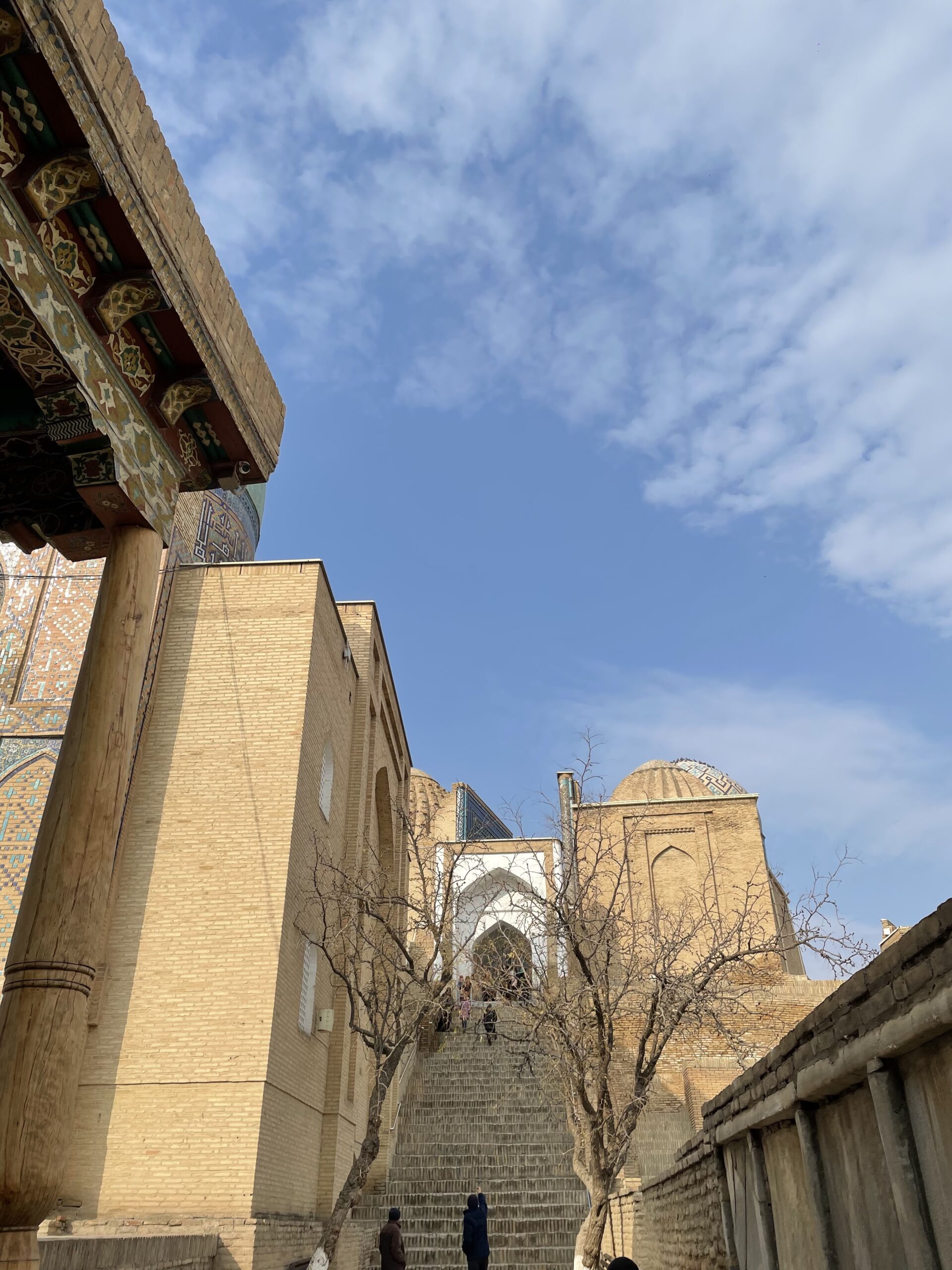
A 40-step staircase to the Shah-i-Zinda complex is the path of repentance and prayer. Every visitor to Shah-i-Zinda, whether a believer or a tourist, counts the steps going up and down. Legend says that if the number on the ascent and descent coincide, then a person can be considered free of sins. Photo credit: Assel Satubaldina/ The Astana Times
Between 1925 to 1930, Samarkand served as the capital of Uzbekistan.
City of Samarkand
The historical part of Samarkand comprises three areas. Towards the northeast lies the remnants of the ancient city of Afrosiyob, established in the 7th century B.C. and later destroyed by Genghis Khan in the 13th century. Excavations have unveiled an ancient citadel, fortifications, a palace, as well as residential and artisanal quarters. Traces of a large ancient mosque, constructed between the 8th and 12th centuries, can also be found.
Moving towards the south, one encounters architectural complexes and the medieval city from the Timurid era of the 14th and 15th centuries. This period played a pivotal role in shaping urban planning, architecture, and arts in the region.
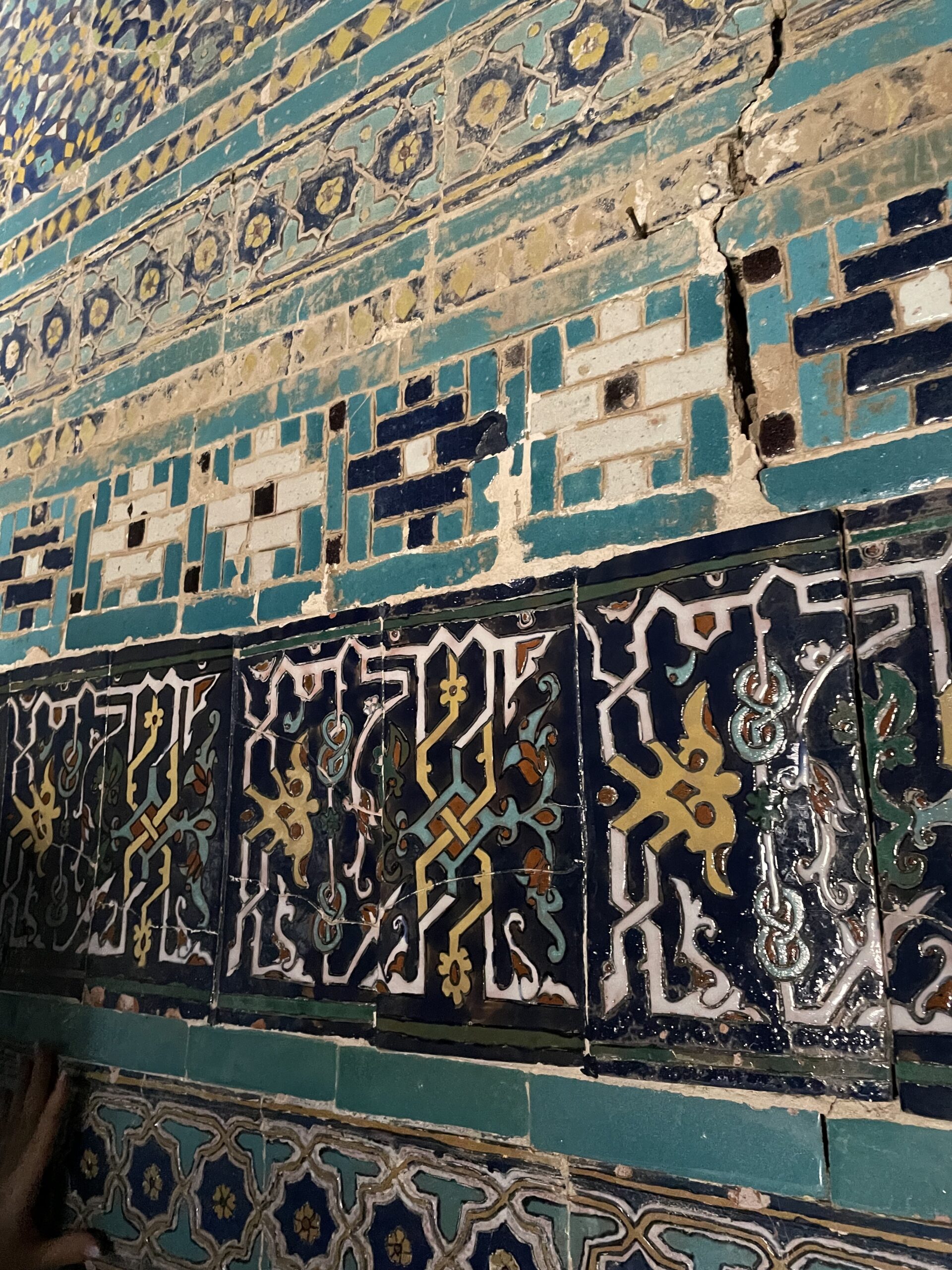
Some of the world’s most beautiful and richest tilework can be noticed on the buildings in Samarkand. Photo credit: Assel Satubaldina/ The Astana Times
The old city still retains considerable portions of historical fabric, characterized by narrow alleys organized into districts featuring communal centers, mosques, madrasahs, and residences. Traditional Uzbek houses, typically one or two stories, are arranged around central courtyards adorned with gardens. These houses, constructed using mud brick, showcase painted wooden ceilings and wall embellishments.
The influence of Timurid artisans in designing and constructing Islamic ensembles was instrumental in the evolution of Islamic architecture and arts, leaving a profound impact across the entire region.
The area in the western part was significantly influenced by Russians settling in the region in the 19th and 20th centuries.
How to get to Samarkand
Samarkand has its own international airport. In 2022, a new terminal with the capacity to serve 1,200 passengers per hour was launched, an increase of 800 passengers per hour before the renovation.
In addition to getting directly to Samarkand by air, flying to Tashkent and taking a super modern high-speed Afrosiyob train is an enchanting option. The cost of tickets starts at $9.
What to do and see
Finding things to do and see is not difficult in Samarkand.
Begin your journey at the Khoja Daniyar mausoleum located next to the Siab River, between the hills of Afrosiyob.

Siab river in Samarkand. Photo credit: Assel Satubaldina/ The Astana Times
The mausoleum is revered by Muslims, Christians, and Jews alike, as it is believed to house the remains of the biblical figure, Daniel. Known as a prophet in Judaism, Christianity, and Islam, Daniel’s legacy transcends religious boundaries, making the mausoleum a place of pilgrimage for believers seeking blessings and solace.
Make sure to drink water from the spring flowing at the mausoleum’s foot. It’s clear ice-cold water is tasty and is said to have healing properties.
Next on the itinerary is the Ulugbek observatory, built in the 1420s by well-known astronomer Ulugbek, the son of Shah Rukh and a grandson of the legendary Timur. Ulugbek was a skilled ruler and a gifted scholar with an insatiable thirst for knowledge. Born in the 15th century, his dedication led to the creation of one of the most advanced observatories of its time.
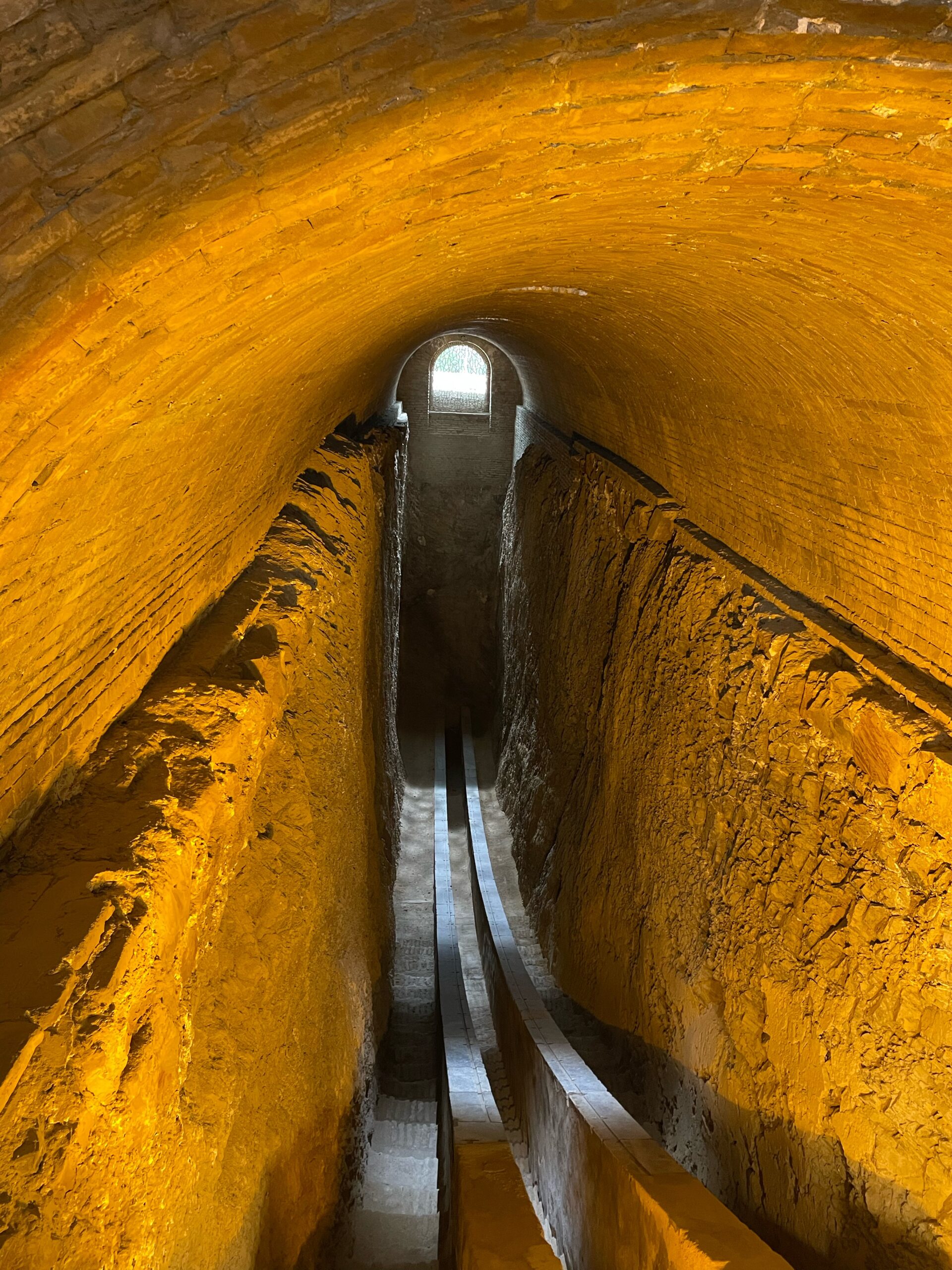
The observatory building has remained abandoned for a long time. The image features only a part of the grandiose instrument of Ulugbek’s observatory with a radius of 40.2 meters, a sextant oriented from north to south. This unique angular meter was used to measure the height of celestial luminaries above the horizon. Photo credit: Assel Satubaldina/ The Astana Times
This celestial haven offers a glimpse into the brilliant minds of the past and their remarkable achievements in unraveling the mysteries of the universe.
Shah-i-Zinda, a mausoleum complex where turquoise domes and ornate tombs create an otherworldly ambiance, is a must-visit place in Samarkand. As you ascend the vibrant, blue-tiled staircase, you encounter well-decorated tombs, each with its own story, considered among the richest tilework in the Muslim world.
Yet, Shah-i-Zinda is not merely an architectural miracle, it is a place of pilgrimage and spiritual devotion. The site is believed to be the final resting place of Qutham ibn Abbas, a cousin of the Prophet Muhammad. This sacred link has made the complex a revered destination for Muslims seeking blessings and solace.
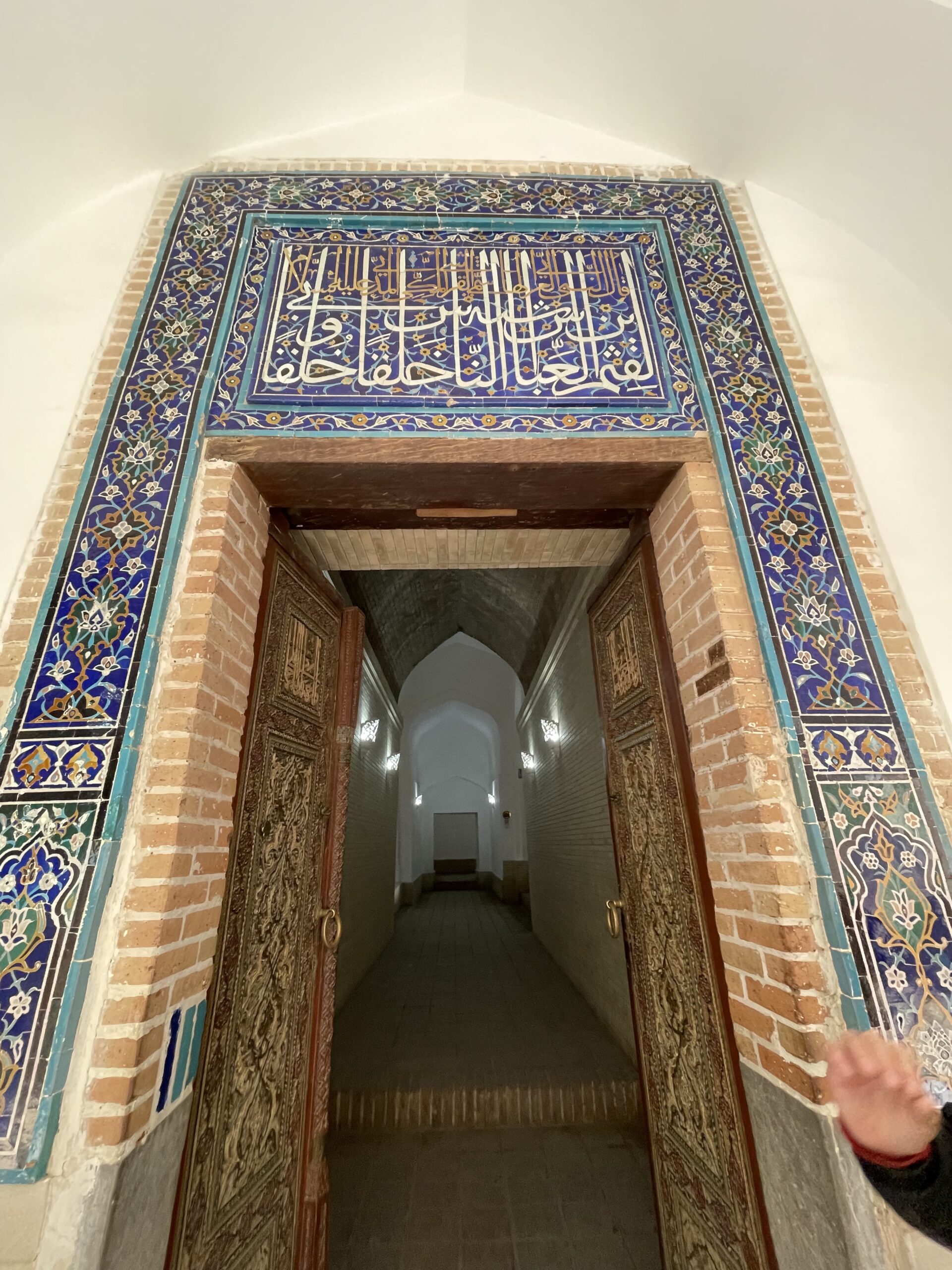
The mausoleums in Samarkand often feature Arabic inscriptions on their entrances. This image depicts the entrance to Qutham ibn Abbas mausoleum. Photo credit: Assel Satubaldina/ The Astana Times
Make sure to visit the central mausoleum of Qutham ibn Abbas. The moment you cross the threshold of the central mausoleum with your right leg, you are met with a palpable sense of holiness, and the air is thick with the whispers of prayers and the echoes of footsteps that have tread this path for generations.
The Qutham mausoleum existed seven centuries before Timur, and later Ulugbek buried their family near the sanctity of the original shrine. The Shodi Mulk Oko Mausoleum (built in 1372) is a resting place for Timur’s sister and niece.
Take a moment to walk along the avenue of mausoleums and reflect on the centuries of history that have unfolded here.

The Bibi-Khanym Mosque in Samarkand has undergone partial destruction and subsequent restoration over the centuries. Photo credit: Assel Satubaldina/ The Astana Times
Bibi-Khanym mosque, a stunning mosque overlooking the Afrosiyob hill, is also essential to visit in Samarkand. Wander through the grandeur of the mosque, a colossal structure and the result of Timur’s architectural ambitions. The mosque’s entrance portal and towering blue dome are awe-inspiring and offer a glimpse into the artistic marvels of the past.
There are many legends about how this amazing mosque, richly decorated with tiles, paintings and carved marble, appeared. But historians still agree that Bibi Khanym mosque was built by order of Timur immediately after his return from India and was named in honor of Tamerlane’s favorite wife, Bibi Khanym, the nickname of Saray Mulk Khanym.
Next on the route is the Gur-e-Amir Mausoleum, holding the legacy of the Timurid dynasty, where intricate Persian-style tiles and azure mosaics adorn the resting place of Timur himself and his descendants. The resplendent beauty of this structure is a sight to behold.
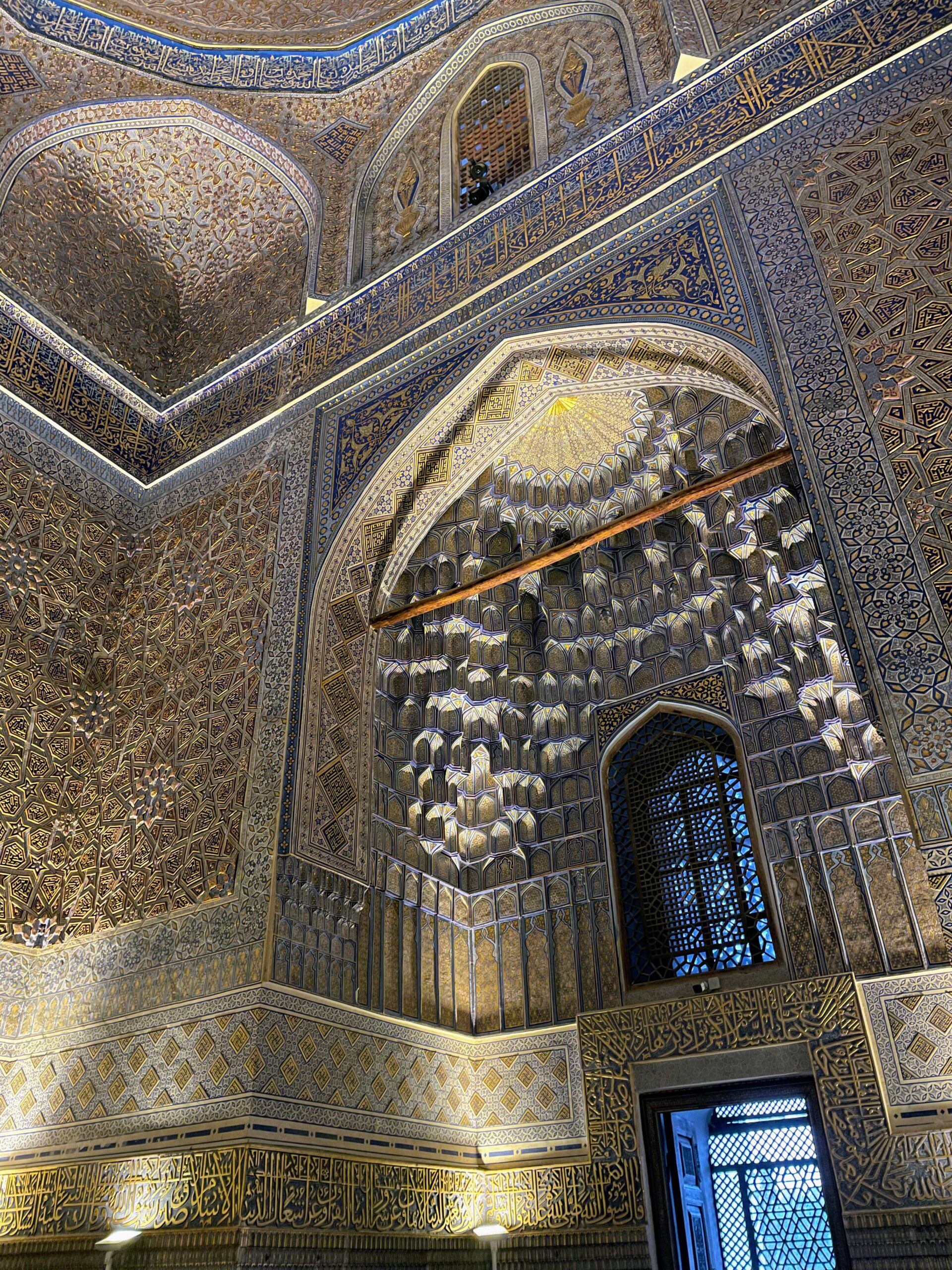
Inside the Gur-e-Amir mausoleum, one is mesmerized by the grandeur of the interior. Photo credit: Assel Satubaldina/ The Astana Times
The royal tomb is an excellent architectural example, with an interior of the tomb and amazing visitors with its entire splendor. The best creators and craftspeople from all over the East worked on this architectural marvel.
The mausoleum’s exterior is a dazzling display of intricate tilework, geometric patterns, and calligraphic inscriptions. The turquoise dome, a hallmark of Timurid architecture, dominates the skyline, reflecting the hues of the Central Asian sky.
Upon entering the mausoleum, your eyes are drawn to the grand chamber that houses the tombs of Timur and his descendants. The central entrance is adorned with inscriptions from the Quran, adding a spiritual element to the artistic grandeur.

Sher-Dor Madrasah was built on Registan Square in Samarkand in 1619-1636. The name is translated as Madrassah with Lions. Photo credit: Assel Satubaldina/ The Astana Time
No visit to Samarkand is complete without immersing yourself in the beauty of the Registan Square, an architectural masterpiece that stands as a testament to the city’s grandeur, adorned by three madrasahs – the Ulugh Beg Madrasah (1417–1420), the Sher-Dor Madrasah (1619–1636), and the Tilya-Kori Madrasah (1646–1660).

Late afternoon on Registan Square. Photo credit: Assel Satubaldina/ The Astana Times
Late afternoon is an excellent time to visit Registan. The warm, golden rays of the setting sun cast a beautiful glow on the monuments, enhancing their splendor. This time of day often sees fewer visitors compared to the peak midday hours, allowing you to explore with more space.
Don’t forget to try plov, a symbol of Uzbek cuisine. Each region in Uzbekistan has its own recipe for this delicious dish. Samarkand plov is traditionally cooked in layers, making it less fatty than Tashkent or Ferghana plov, and often garnished with fried or roasted garlic cloves or chickpea. Plov is usually served with bread, yogurt, or a mix of salads.

